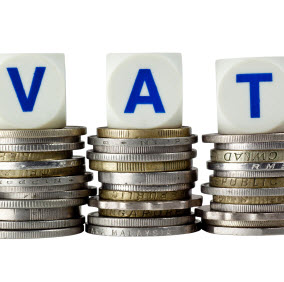The business models of many enterprises have radically changed over the last years and have become increasingly complex.
SAP, however, has failed to keep up, which has resulted in the standard functionality of SAP being no longer sufficient for complying with VAT obligations. Practical solutions must be found within the flexibility and static structure of SAP regarding indirect tax.
Because of this, SAP Indirect Tax Consultants in the market can only patch up the existing SAP framework. Regarding indirect tax, the structure of native SAP has hardly, if at all, changed over the last 20 years.
Richard Cornelisse
As a result of globalization, the business models, on the other hand, have considerably changed. With the aim of creating new sales markets and achieving cost savings, business activities are spread all over the world. Cross-border chain transactions with third parties or within a company (intercompany transactions) have become the rule rather than the exception.
Nontransparent mix
This results in a highly diverse mix of transactions in which drop shipments – deliveries to the final customer of the purchasing party – are often the main point of focus. Transactions between different international stock locations of one and the same legal entity (plants abroad) take place more and more often.
 At the same time, cost considerations lead to a high degree of centralization of administrative functions, whereby compliance and purchase more frequently take place via Shared Service Centers. Many companies also deal with the outsourcing of the production of parts and components of the final products to mostly low-wage countries such as India and China.
At the same time, cost considerations lead to a high degree of centralization of administrative functions, whereby compliance and purchase more frequently take place via Shared Service Centers. Many companies also deal with the outsourcing of the production of parts and components of the final products to mostly low-wage countries such as India and China.
Enterprises set up their business models and transactions in such a way that they can allocate the profits in the fiscally most beneficial way. The advantage of this is a low tax burden for the corporate tax. The indirect tax is typically late, if at all, incorporated in this fiscal strategy.
The consequence of worldwide business practices, the emerging complexity of business models and the centralization of financial functions is that companies get VAT obligations in multiple countries. Combined with the lack of harmonization of regulations in different countries, maintaining the VAT position is extremely complicated.
Without the right VAT regulations, regular ERP systems are not able to process data correctly, thereby risking incorrect calculation of VAT, failure to comply with local VAT obligations, and transactions that cannot be commercially executed.
From emergency patches to eliminating risks
Automatic determination of VAT obligations in chain transactions is not possible in the standard functionality or regular ERP systems, such as SAP. This is due to the fact that essential tax parameters are missing and that it is not possible to link the different transactions in the entire chain (sale-purchase-sale). In actual practice, these flaws in SAP are often patched up in order to keep the system running.
 These emergency patches usually focus solely on one specific problem instead of the entire flow of goods within the company or concern. In that case, the emergency patch is a pre-defined configuration (hard-coding) of assumptions about how transactions will take place. This entails definitively prescribed VAT determination and the risk that this might not match reality.
These emergency patches usually focus solely on one specific problem instead of the entire flow of goods within the company or concern. In that case, the emergency patch is a pre-defined configuration (hard-coding) of assumptions about how transactions will take place. This entails definitively prescribed VAT determination and the risk that this might not match reality.
A delivery from a different stock location in a different country or from a different supplier then results in an incorrect VAT determination. These risks can be eliminated by adding missing tax parameters and linking master and transaction data of all relevant transactions to each other. This paves the way towards automatic determination of VAT obligations.
When this is combined with a Tax Control Framework for real time fiscal monitoring of transactions, companies can eliminate VAT risks.
Beside the highly improved preventive controls regarding risk management, they lay the foundation for more efficient business processes and increased productivity.
Richard Cornelisse, Director Strategy & Sales at Taxmarc™



 The pilot VAT program put in place in January 1, 2012 was expanded nationally on August 1, 2013. The long-awaited administrative measure on VAT exemption for cross border services would now allow companies in China to follow the prescribed procedures to obtain VAT exemption on previously non-zero-rated service revenue from cross-border international transportation and “modern services” within the scope of the pilot VAT program.
The pilot VAT program put in place in January 1, 2012 was expanded nationally on August 1, 2013. The long-awaited administrative measure on VAT exemption for cross border services would now allow companies in China to follow the prescribed procedures to obtain VAT exemption on previously non-zero-rated service revenue from cross-border international transportation and “modern services” within the scope of the pilot VAT program.



 At the same time, cost considerations lead to a high degree of centralization of administrative functions, whereby compliance and purchase more frequently take place via Shared Service Centers. Many companies also deal with the outsourcing of the production of parts and components of the final products to mostly low-wage countries such as India and China.
At the same time, cost considerations lead to a high degree of centralization of administrative functions, whereby compliance and purchase more frequently take place via Shared Service Centers. Many companies also deal with the outsourcing of the production of parts and components of the final products to mostly low-wage countries such as India and China. These emergency patches usually focus solely on one specific problem instead of the entire flow of goods within the company or concern. In that case, the emergency patch is a pre-defined configuration (hard-coding) of assumptions about how transactions will take place. This entails definitively prescribed VAT determination and the risk that this might not match reality.
These emergency patches usually focus solely on one specific problem instead of the entire flow of goods within the company or concern. In that case, the emergency patch is a pre-defined configuration (hard-coding) of assumptions about how transactions will take place. This entails definitively prescribed VAT determination and the risk that this might not match reality.

















Recent Comments